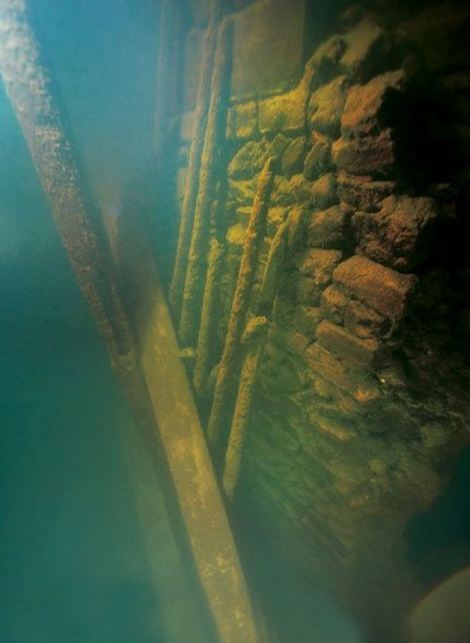|
China |
||||||
| Lost Underwater Lion City: Rediscovery of China’s ‘Atlantis’ June 1st, 2012 Once upon a time,
an ancient city in China was named Lion City because Five Lion Mountain
loomed large behind it. The city, also known as Shi Cheng, has been
buried beneath the water for 53 years. Like the lost Inca City of Machu
Picchu was ‘rediscovered,’ so was this lost underwater city that had
been founded about 1,300 years ago. Lion City is now located about 85 –
131 feet (26-40 meters) beneath the gorgeous Thousand Island Lake
(Qiandao Lake). This valley was submerged when a dam was constructed and
a lake was needed. The lake and thousands of islands were man-made. Shi
Cheng ‘defied’ the Chinese norm since 5 gates and 5 towers were built
into the city instead of 4. Lion City is about the size of 62 football
fields. International archaeologists and a film crew recorded the
amazing preservation of the lost ‘ruins.’
More than half a century ago, the Chinese flooded Lion City, also called
Shi Cheng. Recently Shi Cheng was explored by archaeologists who dubbed
‘Lion City’ as China’s ‘Atlantis rediscovered.’ Photo #1 by Chinese National Geography via Cheer All
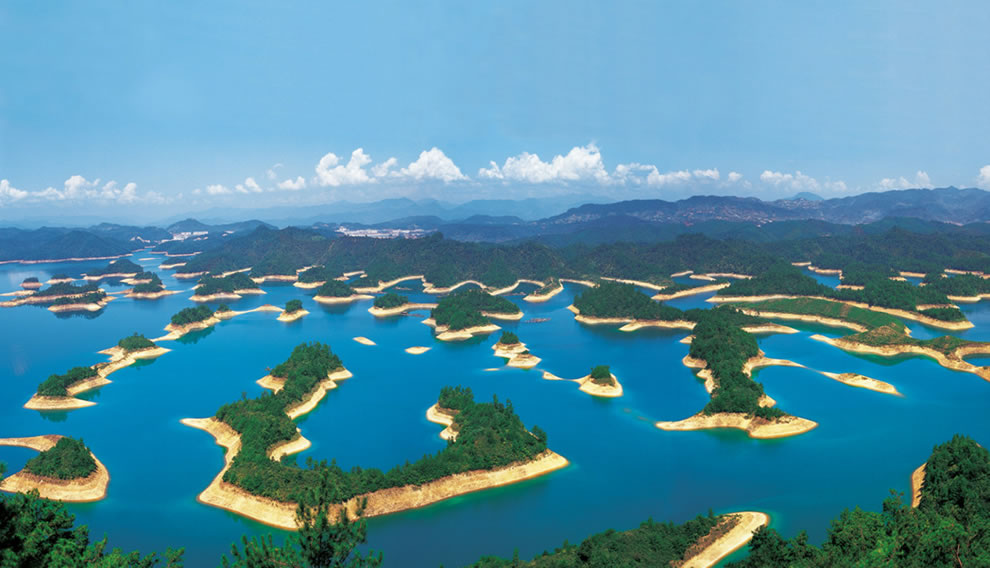 Thousand Island Lake (Qiandao Lake) is a gorgeous man-made lake located in Zhejiang, China. Photo #2 by trasyy
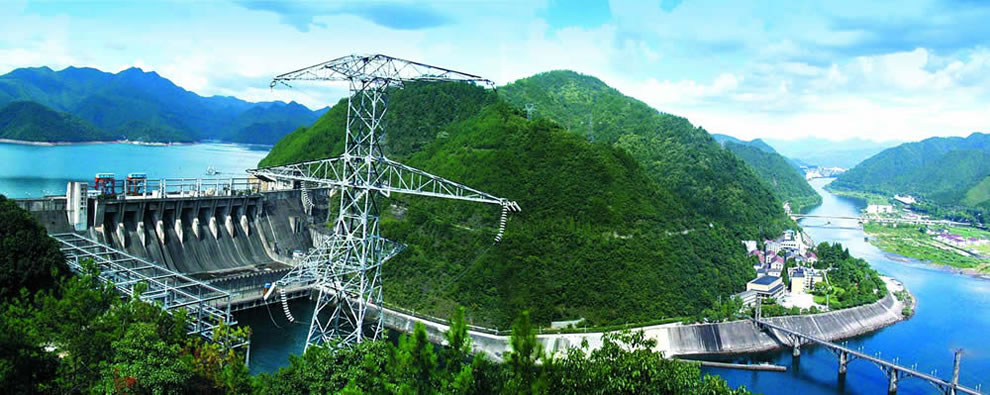 The valley was flooded in 1959 to create the lake for the Xin’an River Dam project. This is Xinanjiang Hydroelectric Station. Photo #3 by Dragon Moon Bay Hotel 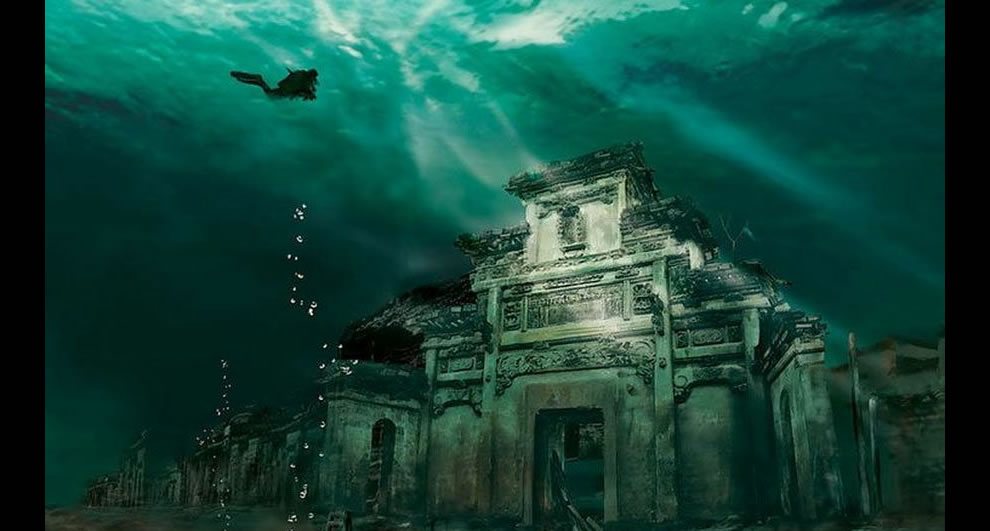 The first underwater exploration attempt of the drowned city was in 2001
when it was discovered there were 265 arches in the preserved ruins.
Lion City is about the size of 62 football fields. Photo (Drawing) #4 by Chinese National Geography
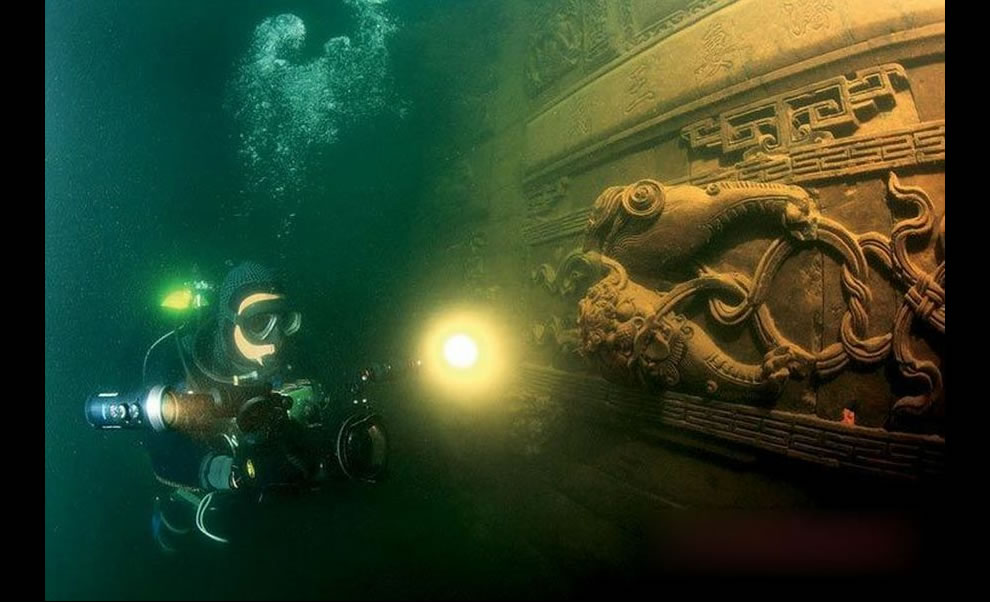
According to Our World,
“It was decided to make an underwater city accessible to tourists.
Special submarine height of 3.8 meters and a length of 23 meters with a
capacity of 48 passengers, was built over six million U.S. dollars to
bring everyone in the underwater kingdom.” The proof-of-concept
archimedes bridge, a submerged floating tunnel, was not finished and
was “banned” to avoid damaging the “delicate undersea structures.” This
image was captured in January 2011 as an underwater film crew tagged
along with archaeologists to explore Qiandao Lake and the ancient Lion
City. Photo #5 by Chinese National Geography via Animal World
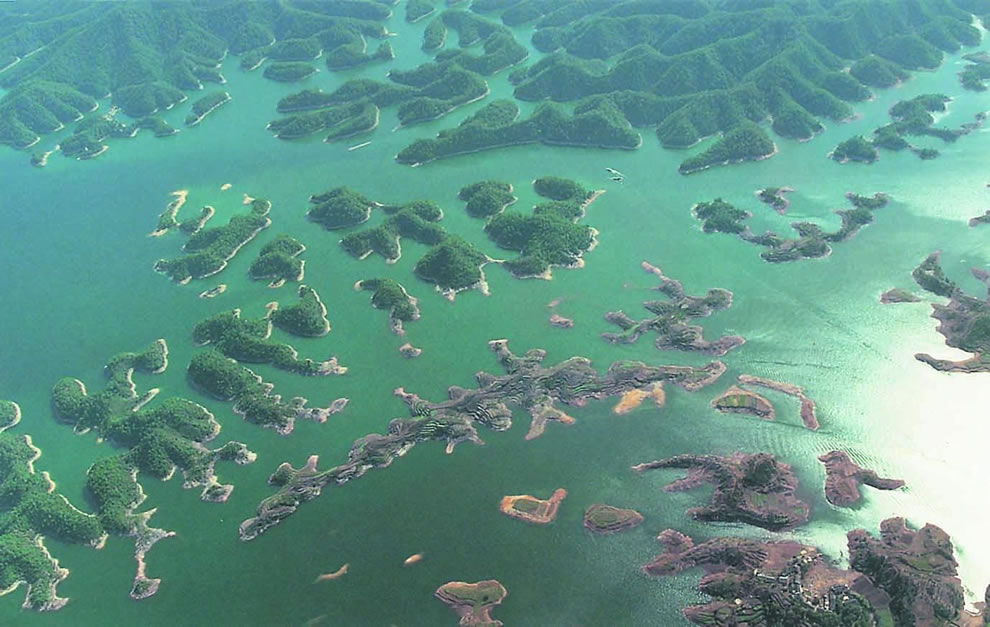 This aerial shot of Thousand Island Lake is interesting, but even more interesting is what lies underneath in the Lost Lion City. Photo #6 by fotki 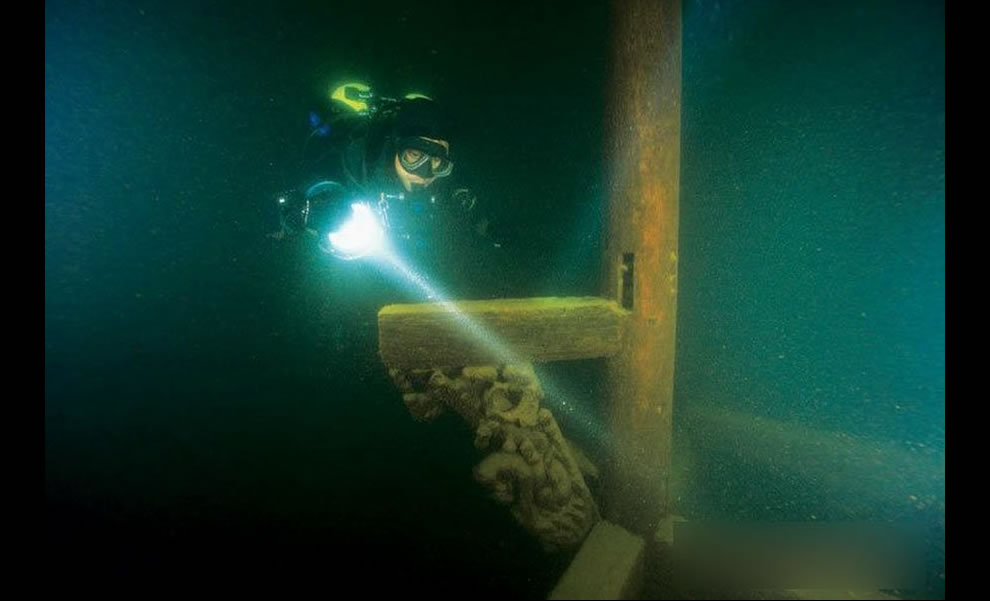 According to National Geography,
as the dive depth increased beneath Qiandao Lake, ever darkening, it
was almost all black by 28 meters underwater. The diving lights gave
only about two meters of visibility and the submerged city is at a depth
of 26-40 meters (85 – 131 feet). But they found out that even wooden
beams and stairs were intact. Photo #7 by Our World
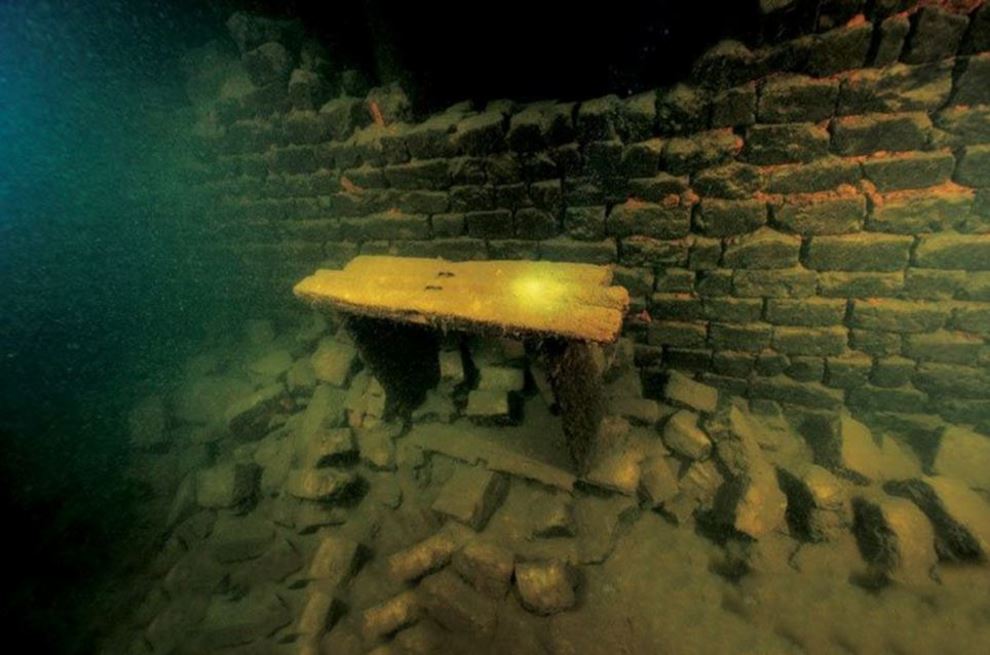 Even wooden structures remain surprisingly strong, according to the team that have gone to inspect Photo #7A Daily Mail
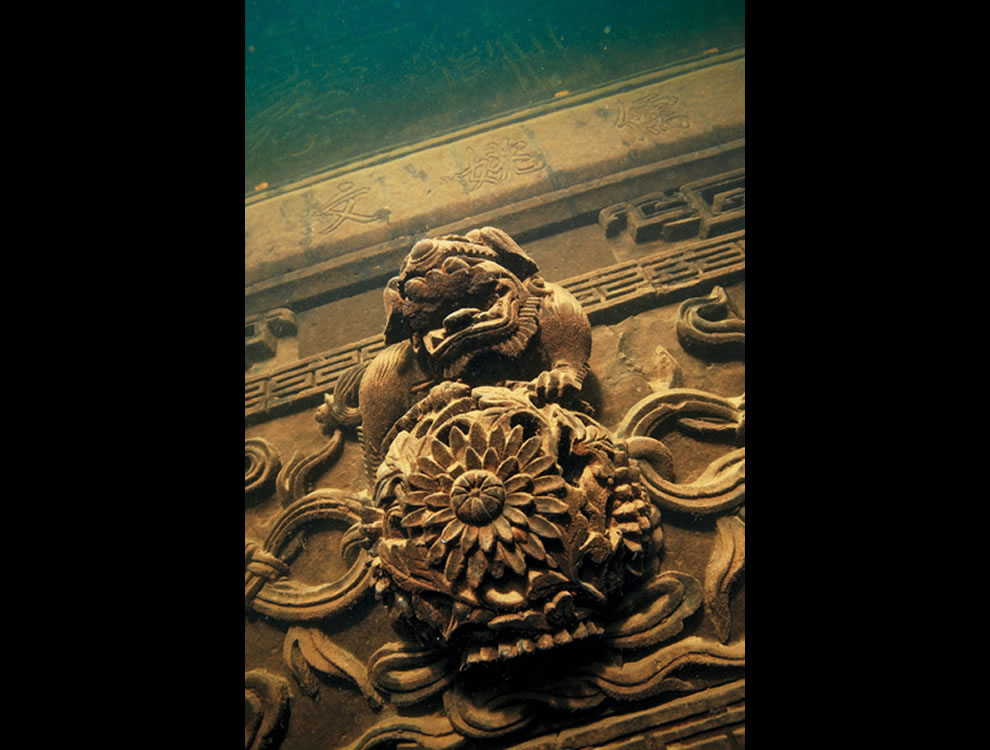 Intricate carvings engraved on buildings as seen when Chinese National Geography released images taken by archaeologists/divers rediscovering the the underwater ‘lost’ city. Photo #8 by Chinese National Geography 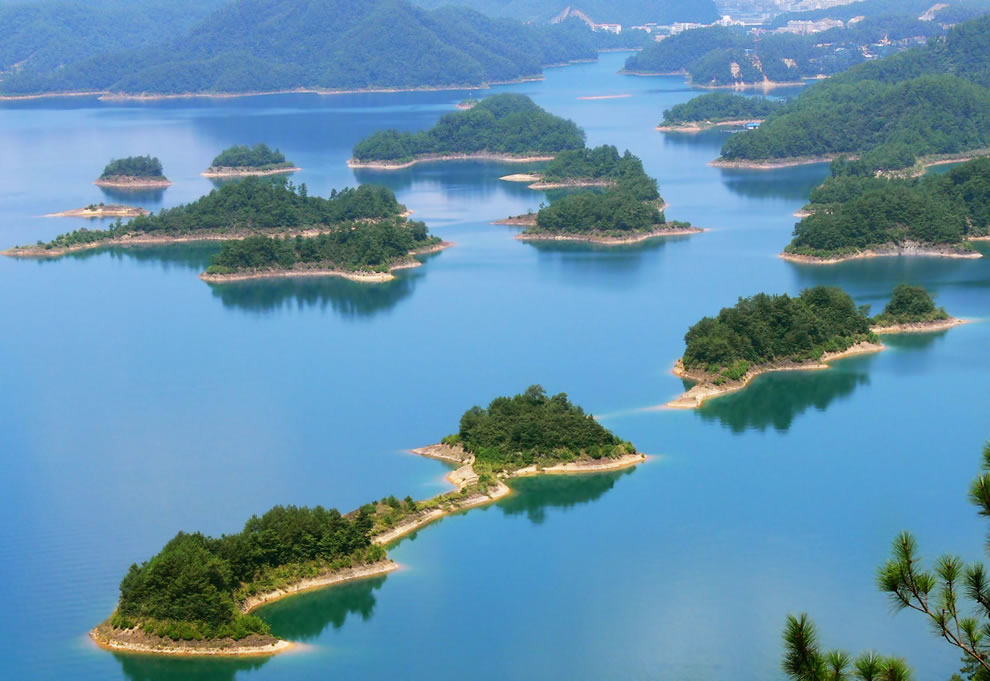 There is a chain of over 1,078 man-made large islands and a few thousand smaller ones at Qiandao Lake. Photo #9 by Oksana Lyutova 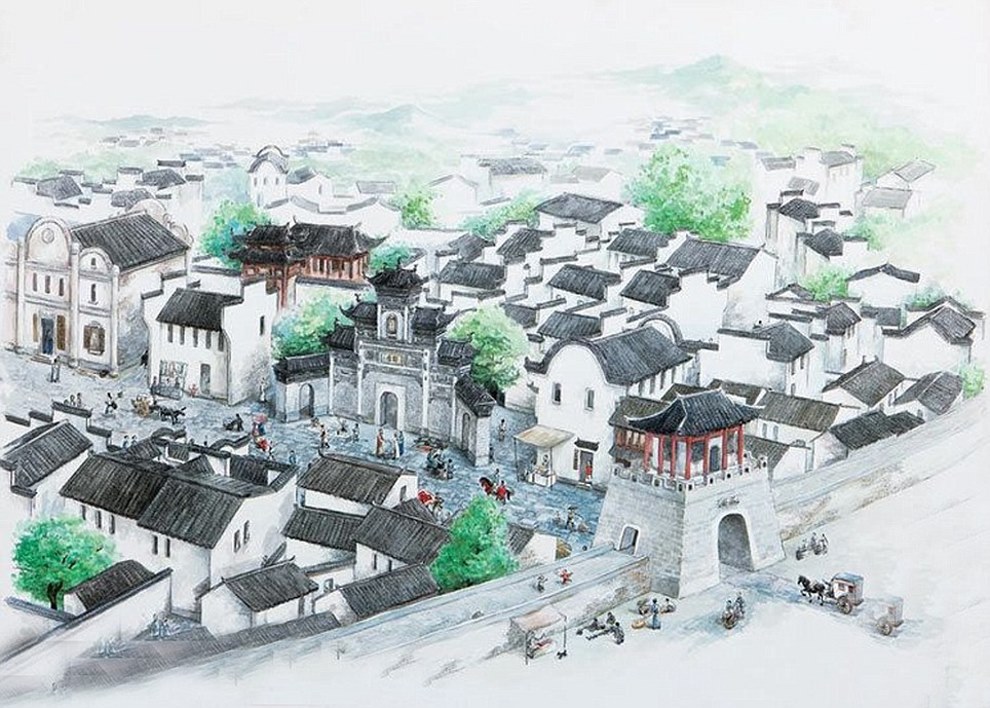 According to Chinese National Geography,
“This is a restoration picture of Shicheng city in east China’s
Zhejiang Province. The city has been submerged under Qiandao Lake since
1959 and the construction of the Xin’an River Hydropower Station.” Photo #10 by Chinese National Geography
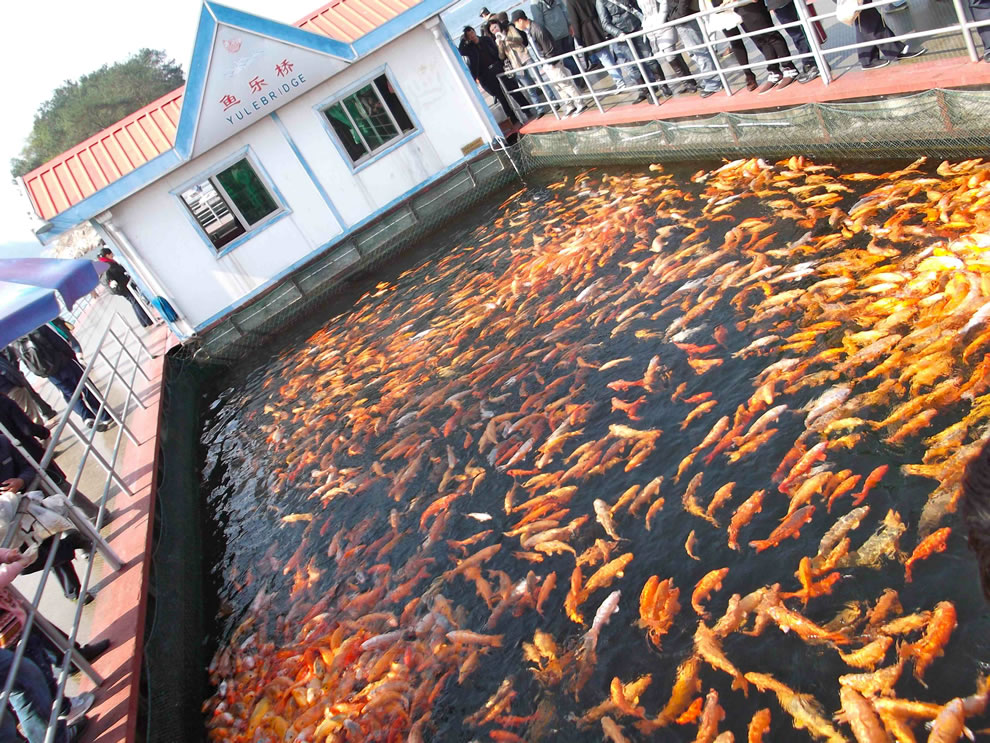 Massive amount of fish on Yule Bridge, as seen while crossing one of the Thousand Lake Islands. Photo #11 by lenhz 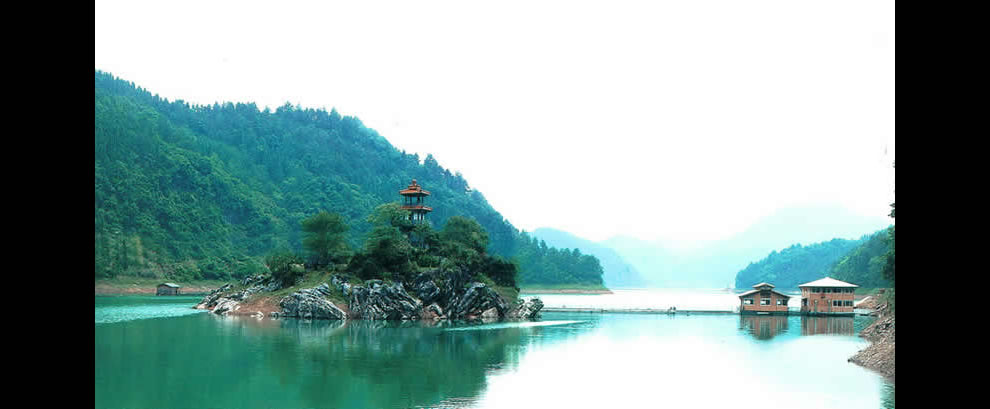 This is called ‘Lovers Island.’ Photo #12 by Dragon Moon Bay Hotel 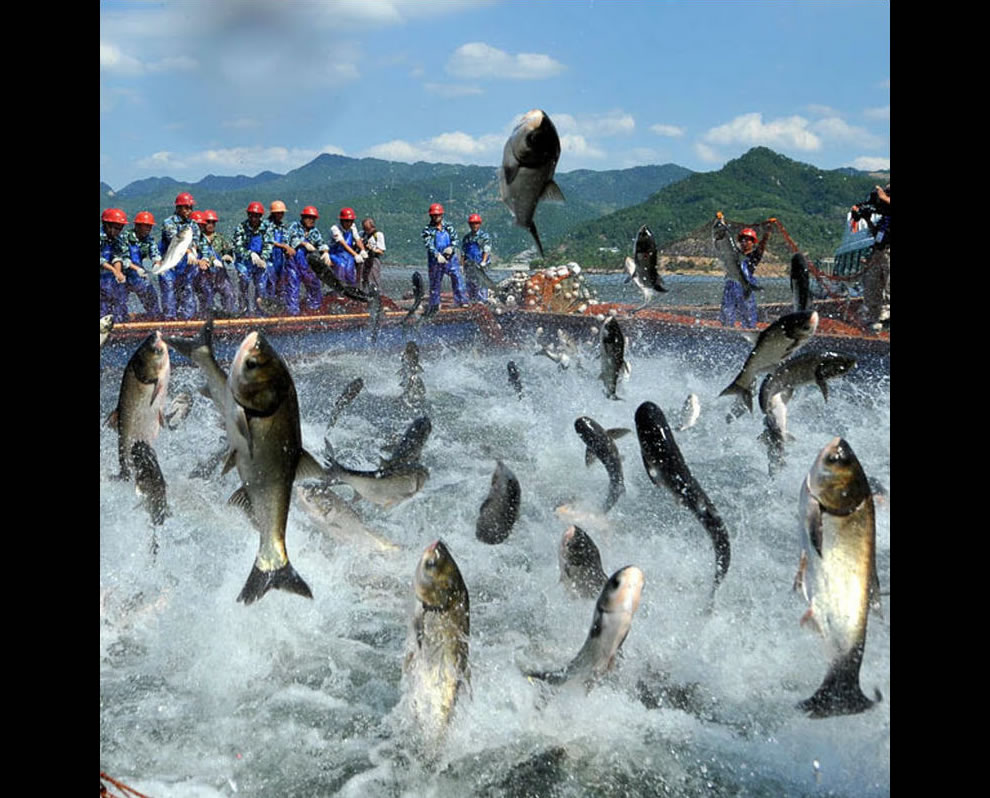 Carp jumping wildly, fishing in China near where “Atlantis” was “rediscovered.” Photo #13 by prikol 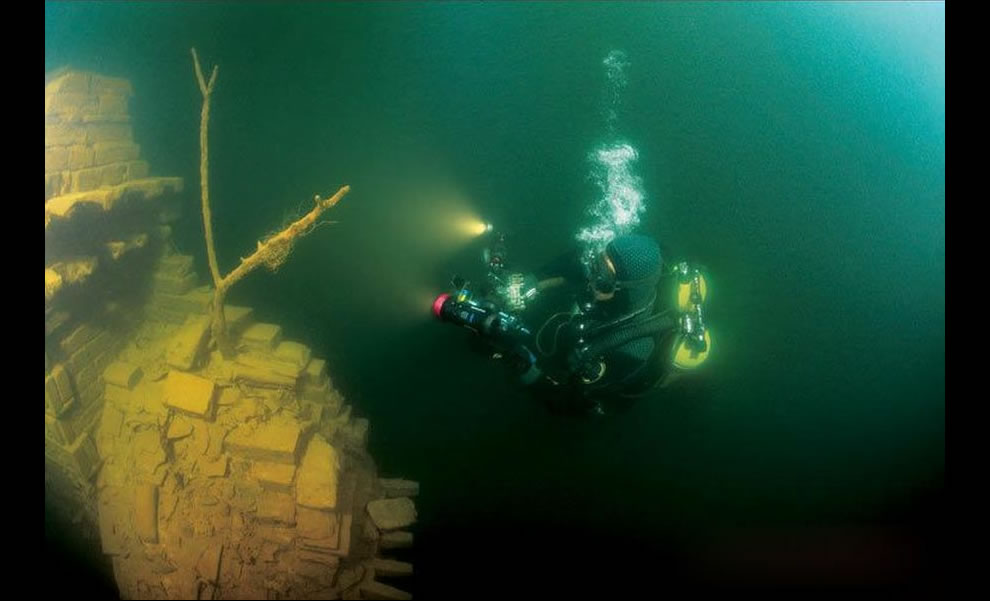 International archeologists said Lion City was an underwater ‘time capsule’. Wikipedia states,
“At the foot of the Wu Shi mountain (Five Lion Mountain) lays an
ancient city known as Shi Cheng (Lions City), built in Dong Han period
(25 – 200), first was set up as county in 208, it was named ‘Lion City’
because of the Five Lion Mountain that sits just behind the city. The
city remains undisturbed from the surface at a depth of 26-40m, Big Blue
dive operator based in Shanghai, runs weekend trips twice a month
throughout the year to the city and has started to uncover parts of the
lost city.” Photo #14 by Chinese National Geography via1-4all
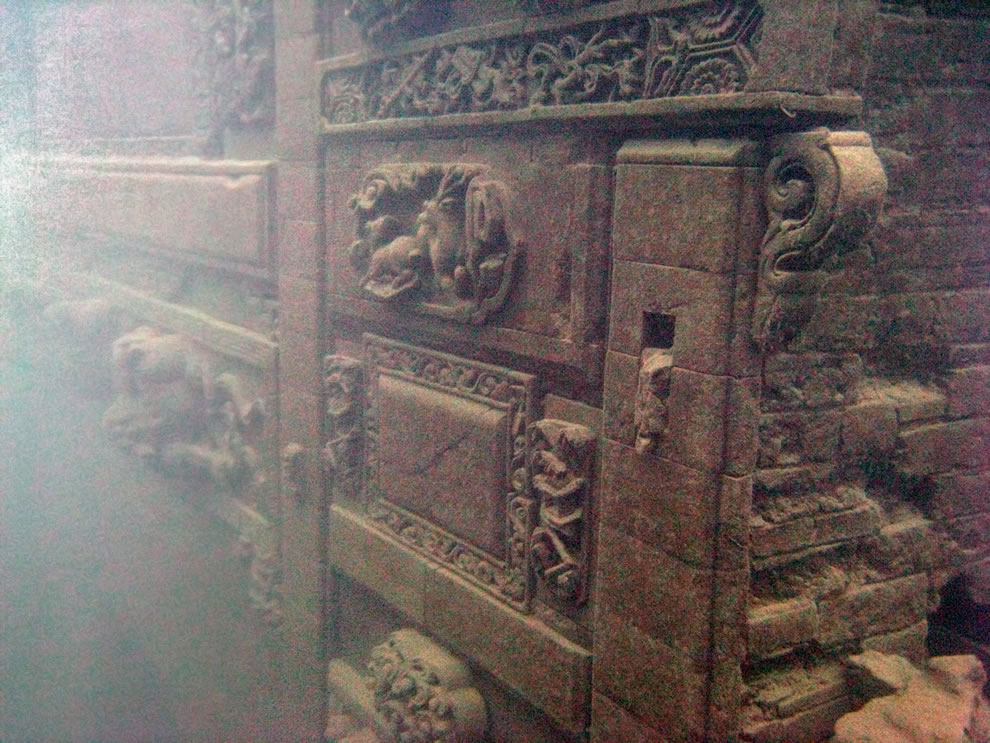 This was the ancient city in 2008. Photo #15 by Nihaopaul 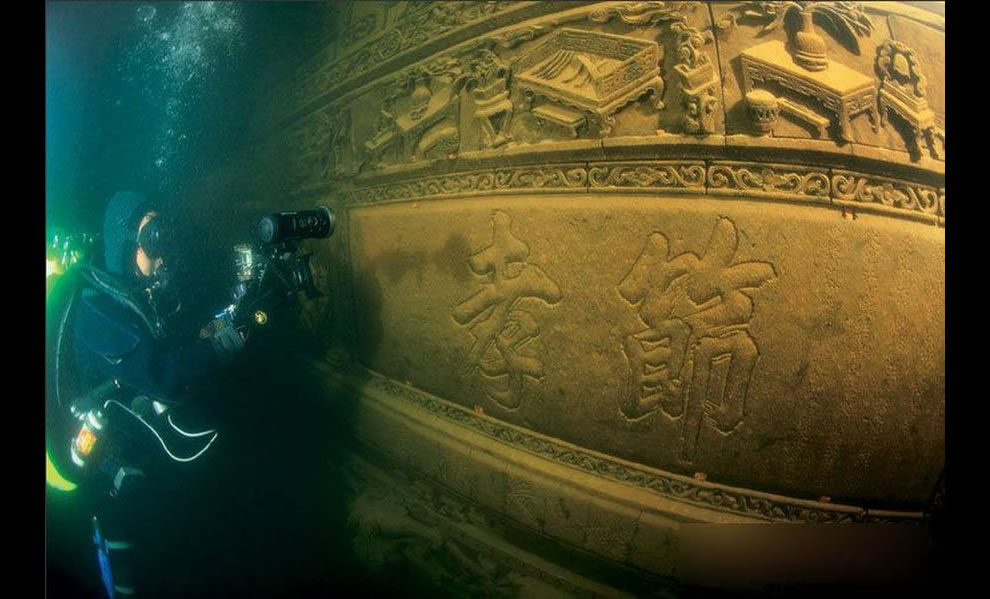 Lion City had five city gates, each with a tower. Before it was buried beneath the water, Shicheng City had six main stone streets that were used to connect every corner of the city. Photo #16 by Chinese National Geography via 1-4all 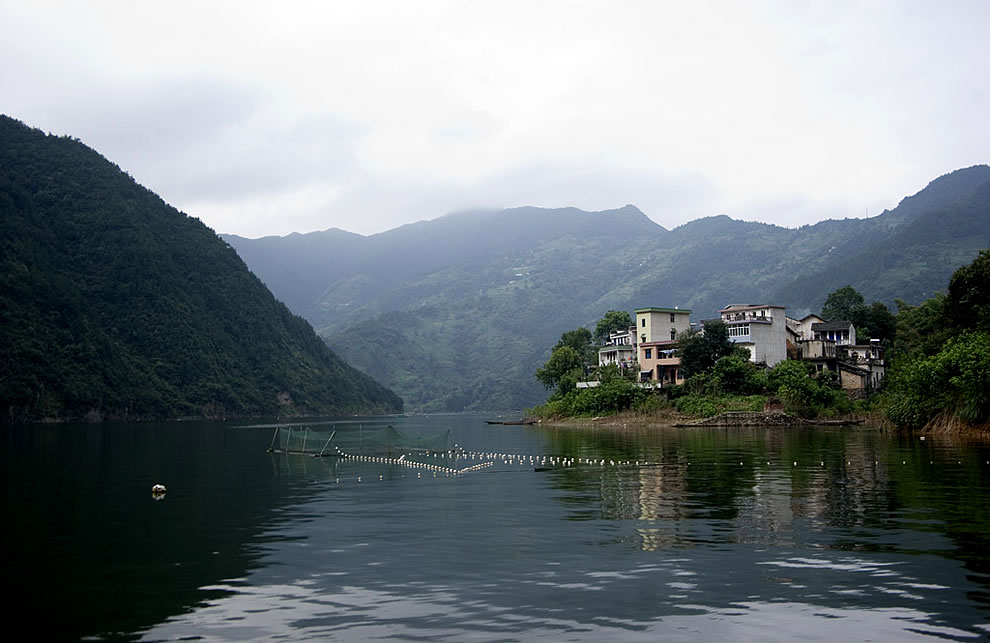 Qiandao Hu fishing village as seen while touring Thousand Island Lake. Photo #17 by le niners 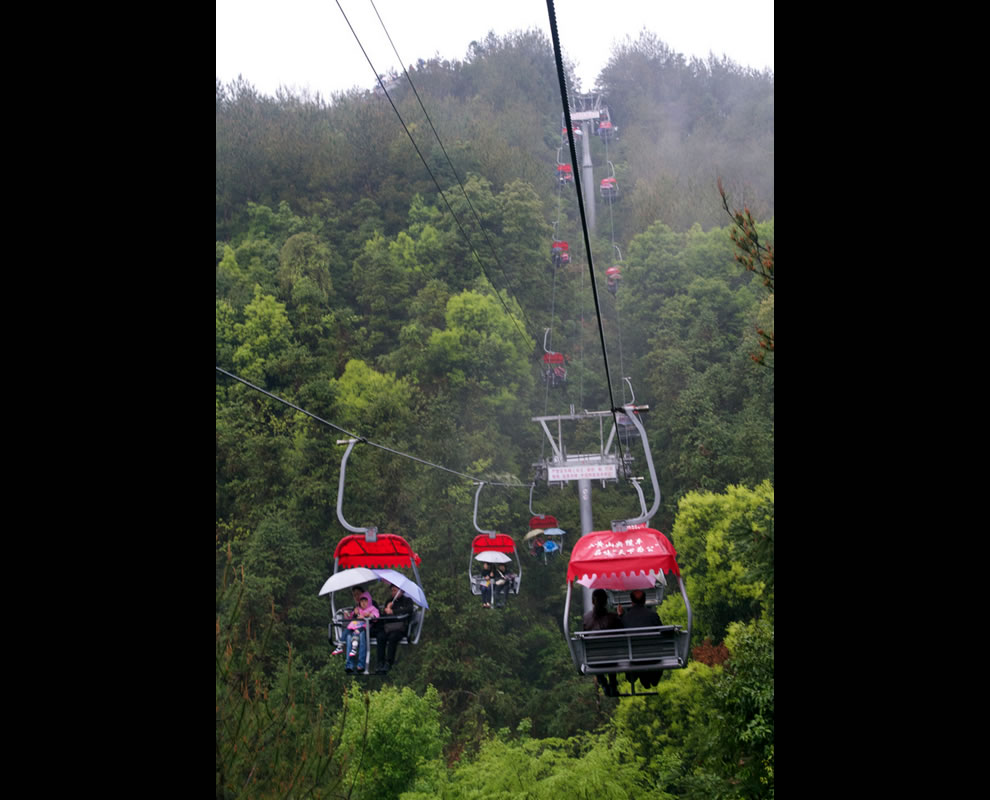 Cable cars over lush forests, another mode of transportation on Qiandaohu. Photo #18 by Daniel Hjort 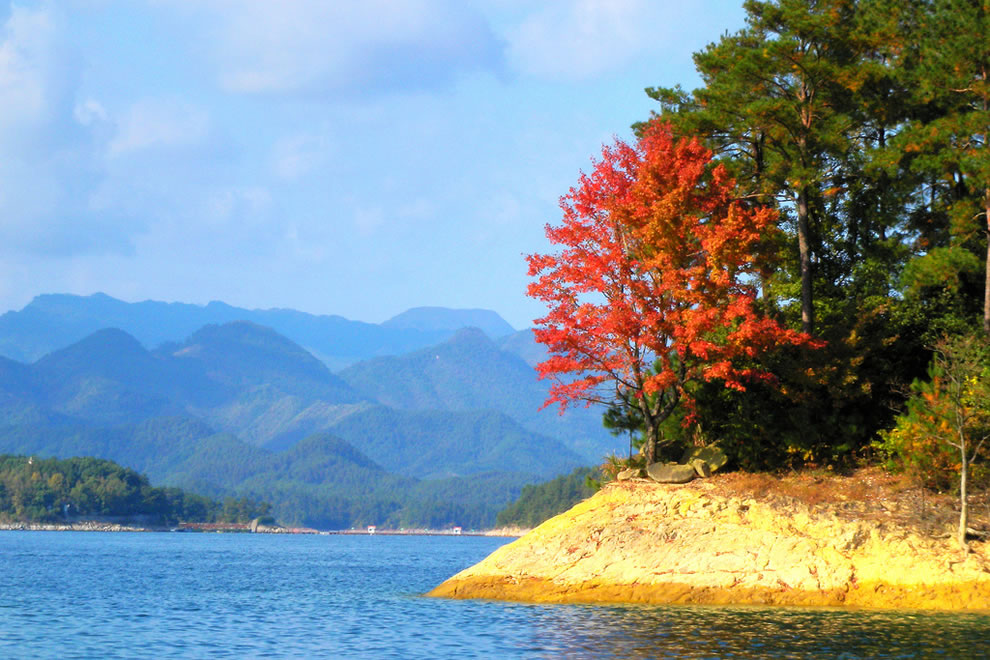 Autumn at Qiandao Lake. Photo #19 by Patrick He 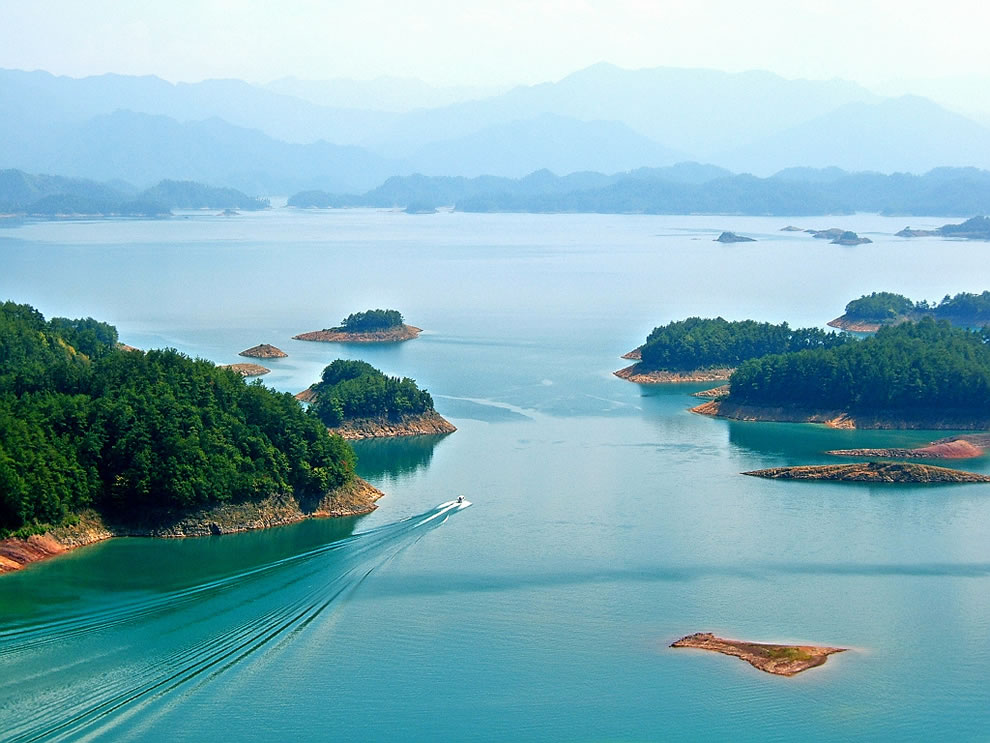 Deep beneath Thousand Island Lake used to be a political and economic hub of the region. Photo #20 by trasyy 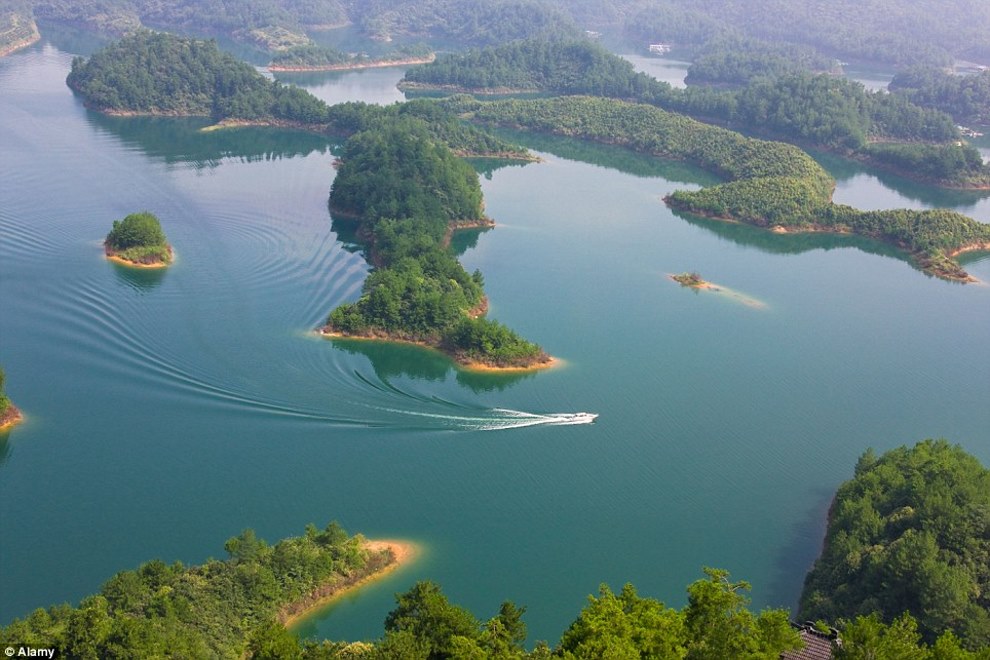 Hidden: The city was once a political and economic hub for eastern China but after authorities built the man-made Qiandao Lake in 1959, it is nowhere to be seen - Photo #23A Daily mail 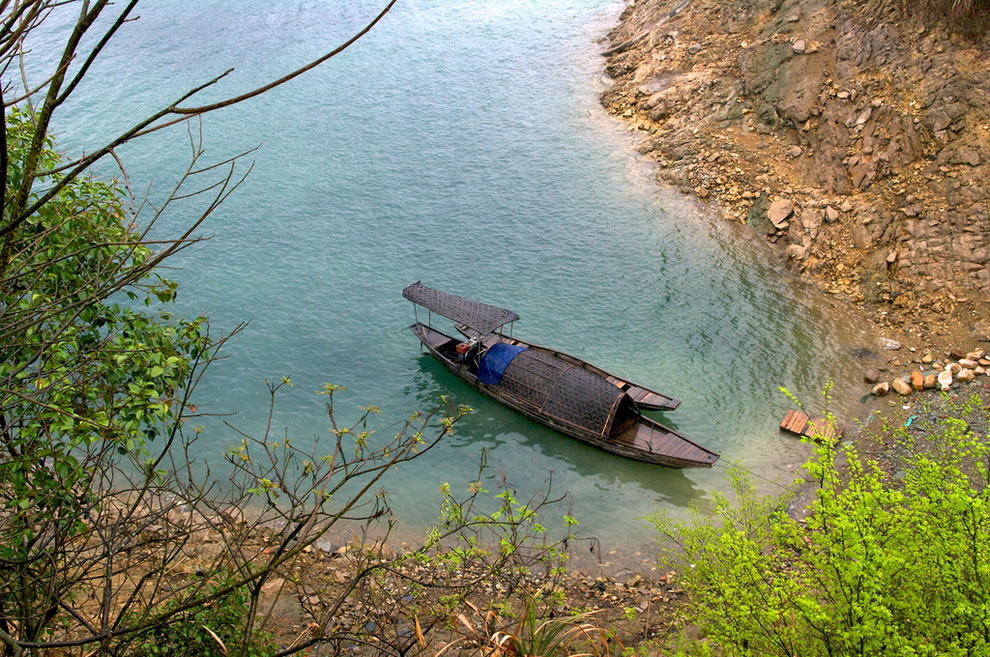 Before Shi Cheng was submerged, 290,000 people had to be relocated from a city where their ancestors had lived in for over 1,300 years. Photo #21 by Daniel Hjort 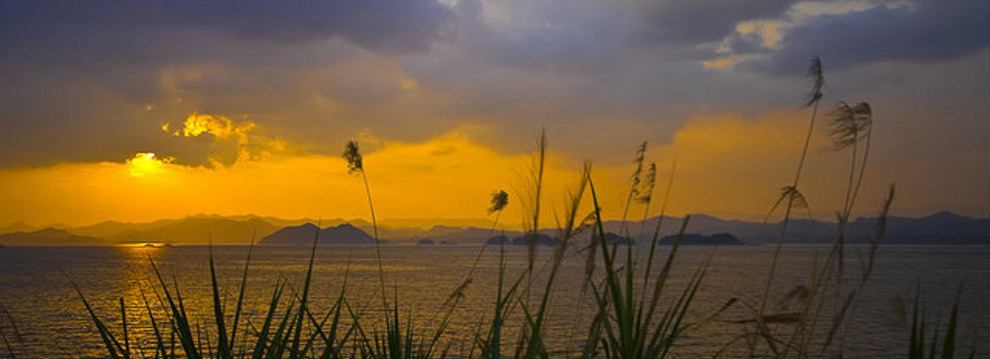 Sunset over the Thousand Island Lake. Photo #22 by Dale Ellerm 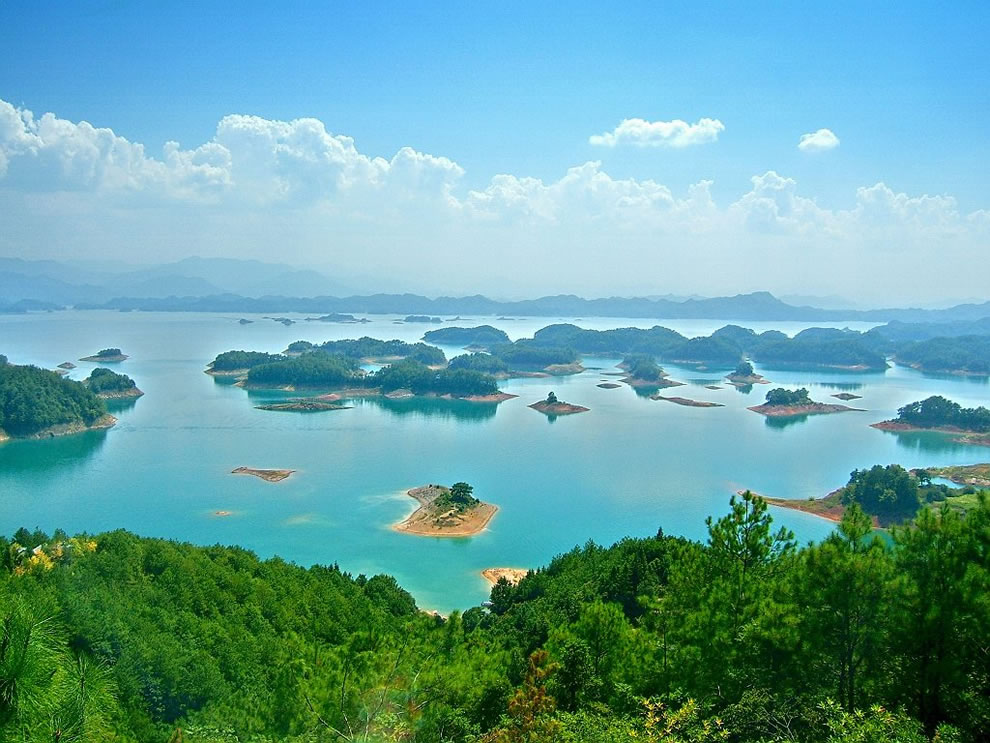 Aerial shot of Quiando Lake. This is a tourist hotspot with ‘theme’ islands including Bird Island, Snake Island, Monkey Island, Lock Island and Island to Remind You of Your Childhood. Photo #23 by Our Planet 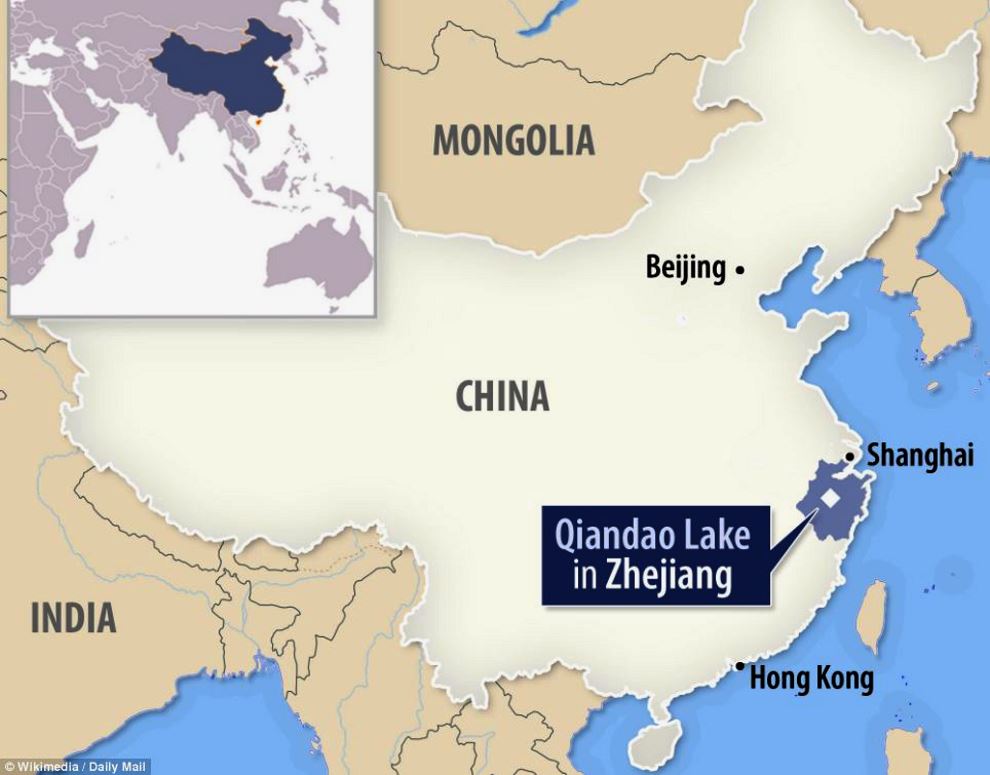 Locator: The newly-built lake, which has generated hydro-electric power for the region, is just south of Shanghai in the far east of China - Wikimedia Qiandao Lake (Chinese: 千岛湖, lit. Thousand
Island Lake), a human-made lake located in Chun'an County, Zhejiang
Province, China, was formed after the completion of the Xin'an River
hydroelectric station in 1959. 1,078 large islands dot the lake and a
few thousand smaller ones are scattered across it. The lake covers an
area of 573 km2 (221 sq mi) and has a storage capacity of 17.8 km3 (4.3
cu mi). The islands in the lake cover about 86 km2 (33 sq mi).
Qiandao Lake is used to produce the Nongfu Spring brand of mineral water. Over 90% of the area is forested. The islands in the lake include Bird Island, Snake Island, Monkey Island, Lock Island (featuring supposedly the world's biggest lock), and the Island to Remind You of Your Childhood. The lake has made Zhejiang a popular area for tourists. As a result, housing development has increased in the area since the late 1990s. The dam creating the lake is located at 29°29′01″N 119°12′48″E and is 105 m (344 ft) tall with a crest length of 466.5 m (1,531 ft). Xin'an Dam was the first dam constructed in China with a height greater than 100 m (328 ft) and its power plant has an installed capacity of 845 MW.  History The valley was flooded in 1959 to create the lake for the Xin'an River Dam project. At the foot of Wushi Mountain (五狮山, "Five Lion Mountain") lies an ancient city known as Shicheng (狮城, "Lion City"). It was built during the Eastern Han Dynasty (AD 25–200) and was first set up as a county in AD 208. This city acquired the name Shicheng from nearby Wushi Mountain, which became known as Wushi Island since it became partially submerged by the reservoir. At present Shicheng remains submerged and undisturbed at a depth of 26–40 m (85–131 ft), it has been explored by Big Blue,[3] a dive operator based in Shanghai. In 1994, in an event since named the Qiandao Lake Incident, three hijackers boarded a boat full of tourists and set it on fire, killing all 32 passengers on board. The passengers were mainly tourists from Taiwan. In 2007, a Chinese-Italian consortium began planning the construction of a prototype of a submerged floating tunnel across the lake. The bridge is expected to span 100 m (330 ft), as a proof of concept for larger bridges. SOURCE: Qiandao Lake - Wikipedia |
||||||
Related Links:
Video: |
||||||
| FAIR USE NOTICE: This page contains copyrighted material the use of which has not been specifically authorized by the copyright owner. Pegasus Research Consortium distributes this material without profit to those who have expressed a prior interest in receiving the included information for research and educational purposes. We believe this constitutes a fair use of any such copyrighted material as provided for in 17 U.S.C § 107. If you wish to use copyrighted material from this site for purposes of your own that go beyond fair use, you must obtain permission from the copyright owner. | ||||||
|
|


